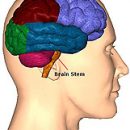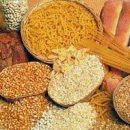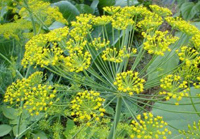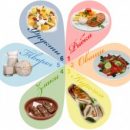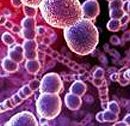During the New Year holidays and numerous fences with delicious food and indispensable alcoholic beverages of patients with pancreatitis, it is probable to get an aggravation and be on a hospital bed.
Content
- What is chronic pancreatitis?
- Why Pancreatitis occurs?
- Symptoms of exacerbation of chronic pancreatitis
- What to do with the exacerbation of chronic pancreatitis?
Chronic pancreatitis — One of the many diseases of the digestive bodies associated with the errors and alcohol consumption. Every year, in the first days of January, Pancreatitis places thousands of patients on hospital beds, leads to severe complications and, despite all the efforts of doctors, the life of each sixth patient will take. At «experience» Diseases in 20–25 years Mortality among patients with chronic pancreatitis reaches 50%.
What is chronic pancreatitis?
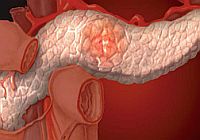 Chronic pancreatitis — the disease characterized by edema and inflammation of the pancreas, a violation of its passoffs, the yield of pancreatic enzymes for their limits and «Self-relocating» Organ.
Chronic pancreatitis — the disease characterized by edema and inflammation of the pancreas, a violation of its passoffs, the yield of pancreatic enzymes for their limits and «Self-relocating» Organ.
Each exacerbation of Pancreatitis «Kills» A small piece of functionally active tissue of the pancreas, its place is occupied by cysts and scars, which leads to a violation of the synthesis of digestive enzymes and hormones controlling carbohydrate metabolism. Pancreatitis is always accompanied by digestive problems and during long flow often leads to the development of diabetes.
Why Pancreatitis occurs?
The main reason for the occurrence of chronic pancreatitis and the main factor that leads to its exacerbation, — alcohol. In 60–70% of cases of illness is a consequence of systematic abuse of alcohol and is found in men 35–45 years.
Another reason for pancreatitis — Grooming disease, more relevant for women 50–60 years old, leading a sedentary lifestyle and obese, arterial hypertension. The exacerbations of the disease are very often provoked by overeating, use of oily and acute food, leading to the movement of stones, spasm of sphincter Oddi, violation of the outflow of bile and pancreatic enzymes.
The exacerbation of pancreatitis can be associated with stress, physical activity leading to dyskinesia of biliary tract and pancreatic duct. Sometimes the outflow of the edge of the gland is broken as a result of inflammatory diseases of the duodenum, ulcerative disease or intestinal tumors and pancreatic glands.
Symptoms of exacerbation of chronic pancreatitis
Pain
Pain syndrome occurs in 84–99% of cases of exacerbation of the disease. Pain occurs in the upper part of the abdomen, it spreads to the left, and when the whole gland is defeated, the lower back and turns onto the back. The appearance of pain is most often due to meals or alcohol. Initially, it is stupid character, then enhances, bottled, becomes a burning, goded, drilling. To facilitate suffering, the patient is forced to look for a comfortable position and most often sitting sitting, slightly tilt the torso ahead.
The aggravation of chronic pancreatitis may be accompanied by a constant pain within 6–7 days, but in most cases the attacks of severe pain are interspersed with discomfort and gravity in the stomach.
Dyspepsia
The aggravation of chronic pancreatitis is accompanied by a strong intoxication due to the yield of pancreatic enzymes beyond the pancreatic ducts, the decay of its fabrics and the absorption of the decay products into the blood. Attacks of pain in pancreatitis are accompanied by nausea, abundant repeated vomiting, which does not bring relief. There is a bloating of the abdomen, the chair becomes unstable, oil-like, often diarrhea.
Due to the lack of pancreas enzymes, food digestion is broken. Many patients notice Fat stains on the surface of feces and water in the toilet.
Incication leads to an increase in body temperature, loss of liquid with vomiting and diarrhea leads to dehydration. The patient's face becomes gray-earth, the skin is dry, flabby, the eyes are wetted, the tongue is covered with a white dense bloom, a bad smell appears from mouth.
Reducing pain can not return the patient lost appetite. Frightened by the strongest attack, it categorically refuses meals and loses 5 in a few days–7 kg.
Signs of diabetes
They are found in 58–63% of patients with chronic pancreatitis, and in the absence of pain syndrome, often become the first manifestation of the disease. In this case, the patient notes dry mouth, constant thirst, frequent urination, itching of the skin and mucous membranes.
Jaundice
Jaundice occurs in 23% of patients with chronic pancreatitis in the compression of the inflamed edema pancreatic iron of the total bile duct, according to which bile reaches the duodenum. At the same time, the skin and mucous membranes of the patient acquire a yellowish tint, urine becomes dark, and feces pale.
The exacerbation of a rare non-chronic form of chronic pancreatitis is masked by discomfort in the abdomen, alternating diarrhea and constipation, increasing the number of carte masses, their looseness, the appearance of intolerant fiber and fat impurities in them.
What to do with the exacerbation of chronic pancreatitis?
 Chronic pancreatitis — severe disease in which inflammation can end with the melting of most of the pancreas fabric, i.e. pancasenecosis. Predicted in advance how the disease will behave, it is impossible, so when symptoms of the exacerbation of pancreatitis, it is necessary to urgently apply for medical care.
Chronic pancreatitis — severe disease in which inflammation can end with the melting of most of the pancreas fabric, i.e. pancasenecosis. Predicted in advance how the disease will behave, it is impossible, so when symptoms of the exacerbation of pancreatitis, it is necessary to urgently apply for medical care.
Most often, the most acute pain syndrome forces the patient to cause an ambulance brigade, which delivers the patient to the hospital. Full examination, dynamic monitoring of the patient's condition and its analyzes, intensive therapy aimed at reducing edema and enzymatic activity of the pancreas, the elimination of pain, dyspepsia and symptoms of intoxication quickly lead to positive results, while self-examination often leads to irreversible negative consequences.
The first thing is necessary when aggravating chronic pancreatitis, — Full rejection of food. In the first 2–3 days of exacerbation of the patient must be used as much liquid as possible. Hydrocarbonate chloride mineral waters without gas up to 2.5 liters per day. In the future, a diet 5P is shown, including wheat crumbs, rubbed vegetarian soups with the addition of semolina and oatmeal, crushed low-fat meat and fish, low-fat dairy products, ripe sweet fruits and berries.
Medical treatment of exacerbation of chronic pancreatitis includes disinfecting intensive therapy, the purpose of drugs that reduces the acidity of the stomach, normalizing the outflow of bile and pancreatic enzymes, enzyme preparations, in order to reduce the activity of the pancreas, eliminate the deficit of pancreatic enzymes and the normalization of digestion.
Literature:
- YU. IN. Vasilyev, Chronic Pancreatitis: Diagnostics and Treatment. Doctor, number 2, 2005.
- BUT. N. Dogs, diagnosis of internal organs. T. 1, diagnostics of digestive diseases, 2010.

